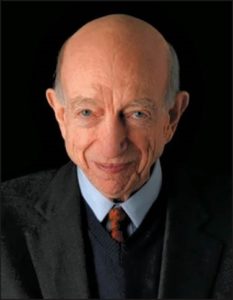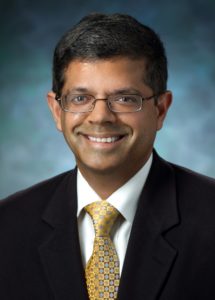 ARNALL PATZ, MD, was a world-renowned scientist, clinician, teacher, and administrator. Throughout his career, he immeasurably brightened the lives of everyone he met.
ARNALL PATZ, MD, was a world-renowned scientist, clinician, teacher, and administrator. Throughout his career, he immeasurably brightened the lives of everyone he met.
Beginning in 1950, while still an ophthalmic resident in Washington, DC, Dr. Patz first noticed an association between incubators and retinopathy of prematurity, a leading cause of infant blindness. In one of the first clinical trials in all of medicine, he followed premature babies who were routinely given high concentrations of oxygen and others who were given lower doses. Rebuffed by funding agencies, which thought the proposal unscientific and possibly dangerous, Dr. Patz conducted the clinical trial without federal funding. His study proved the link between exposure to high levels of oxygen and blindness.
For his groundbreaking discovery, he received the prestigious Albert Lasker Medical Research Award, presented to him by Helen Keller in 1956. Later, at her suggestion, he established an ongoing partnership between the Wilmer Eye Institute and the Lions Club of Multiple District 22 and was awarded the Lions Humanitarian Award for his work.
Dr. Patz joined the Wilmer Eye Institute’s full-time faculty in 1970 as the inaugural Seeing Eye Research Professor. While at Wilmer, he founded the Retinal Vascular Center, which pioneered the management and treatment of diabetic retinopathy. During this time, he continued to make important discoveries about diseases caused by abnormal growth of blood vessels in the eye and helped to develop one of the first argon lasers for treating diabetic retinopathy and age-related macular degeneration.
In 1979, Dr. Patz became the Wilmer Eye Institute’s fourth director. During his 10-year tenure, he enlarged Wilmer’s clinical and research programs, as well as its facilities. While at Wilmer, Dr. Patz fostered the careers of numerous young clinicians and scientists, whose names and accomplishments have themselves subsequently received well-deserved international respect and recognition.
A past president of the American Academy of Ophthalmology, Dr. Patz was the author of more than 250 scientific publications and four textbooks. He received many distinguished awards, including the inaugural Patz Medal from the Macula Society (1989), the first Helen Keller Prize for Vision Research (1994), and the Presidential Medal of Freedom, the nation’s highest civilian honor (2004).
 KANNAN RANGARAMANUJAM, MS, PhD, the Arnall Patz Distinguished Professor, is the co-director of The Center for Nanomedicine at the Johns Hopkins Wilmer Eye Institute and a leading authority on nanotechnology-based targeted drug delivery systems. He also holds joint appointments at the Johns Hopkins University Whiting School of Engineering in the Departments of Chemical and Biomolecular Engineering and Materials Science and Engineering, as well as at the Kennedy Krieger Institute.
KANNAN RANGARAMANUJAM, MS, PhD, the Arnall Patz Distinguished Professor, is the co-director of The Center for Nanomedicine at the Johns Hopkins Wilmer Eye Institute and a leading authority on nanotechnology-based targeted drug delivery systems. He also holds joint appointments at the Johns Hopkins University Whiting School of Engineering in the Departments of Chemical and Biomolecular Engineering and Materials Science and Engineering, as well as at the Kennedy Krieger Institute.